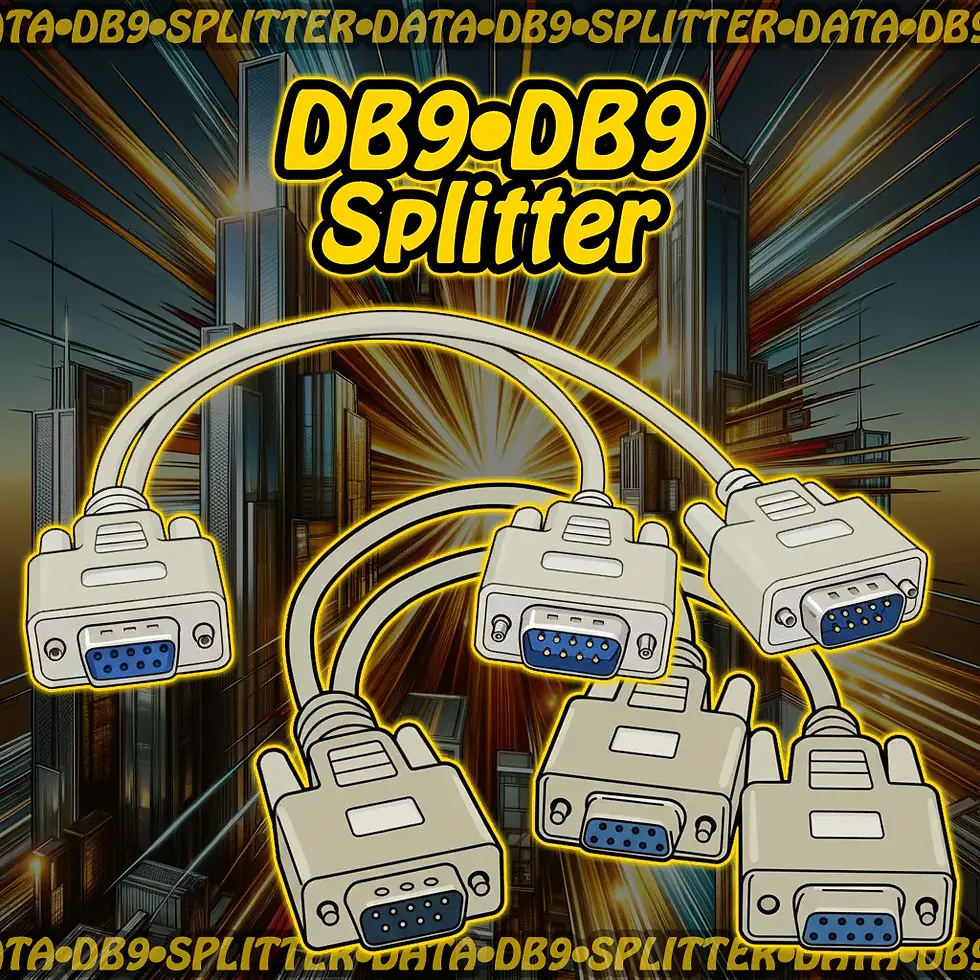🧠📡 DB9 • DB9 Serial Splitter
These splitters allow one DB9 serial port to connect to two DB9 devices. They’re used to mirror or route serial data across multiple endpoints—ideal for monitoring, daisy-chaining, or expanding legacy control systems.
🔧 Splitter Variants & Use Cases
🔌 DB9 Male → 2× DB9 Female
- Use Case: Connect one serial source to two receiving devices
- Devices: PC → radio + data logger, or PLC → sensor + monitor
- Ideal for passive monitoring or parallel data logging
🔌 DB9 Female → 2× DB9 Male
- Use Case: Connect two serial sources to one receiving device
- Devices: Two PCs → shared serial-controlled device (e.g. modem or switch)
- Useful in switchable control setups or shared access environments
🖥️ Compatible Devices
- 💻 PCs, laptops, and embedded systems with DB9 serial ports
- 📻 Radios, modems, and telemetry modules
- 🧠 PLCs, industrial controllers, and automation gear
- 🛠️ Diagnostic tools and breakout boards
- 📡 Data loggers, sensors, and legacy AV equipment
✅ Common Uses
- 🧠 Mirror serial output to two devices for monitoring or logging
- 🛠️ Share one serial device between two controllers
- 🔁 Daisy-chain CAN bus or RS-232 modules
- 📡 Connect multiple radios or sensors to a single port
- 🧪 Test serial communication across multiple endpoints
🧠 Signal Format Notes
- ⚙️ DB9: RS-232 standard (TX, RX, RTS, CTS, etc.)
- 🔁 Splitters are passive—no signal amplification or protocol conversion
- 📉 Only one device should transmit at a time to avoid collisions
- 🔊 No audio—pure data signaling
- 🧠 Pinouts are typically straight-through; custom wiring may be needed for specific setups
⚠️ Things to Watch Out For
- 🚫 Not suitable for simultaneous bidirectional communication from both outputs
- 🔌 Signal degradation possible with long cable runs or poor shielding
- 🧯 Voltage mismatches can damage sensitive equipment
- 📉 Some devices may require handshaking lines—verify compatibility
- 🧪 Always test with known-good devices before deploying in live systems
🛠️ Quick Tips for Beginners
- 🧠 Identify DB9 by trapezoidal 9-pin layout
- 🔍 Use shielded cables to reduce EMI/RFI interference
- 🧲 Choose splitters with thumbscrews for secure connection
- 🧼 Clean connectors gently—dust can cause poor contact
- 🏷️ Label each leg of the splitter clearly to avoid confusion in complex setups



